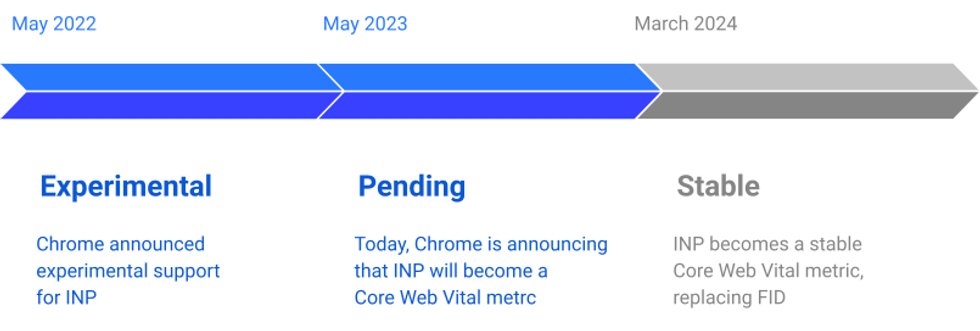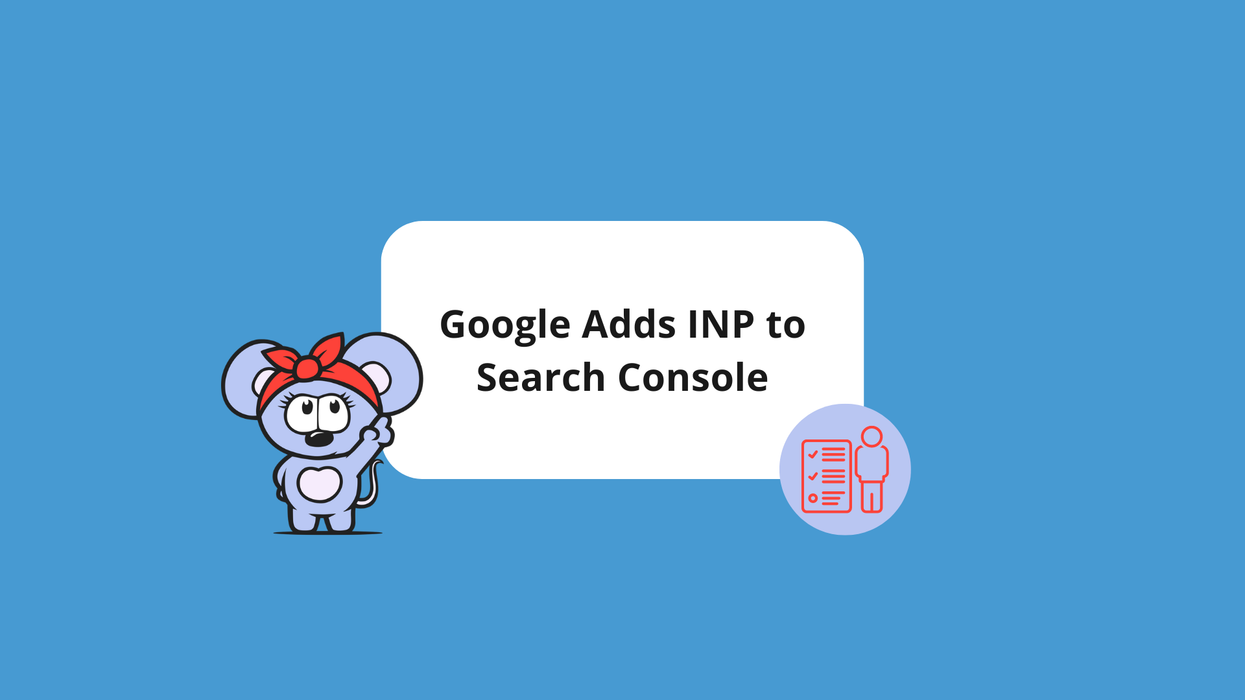Google has begun to notify users via email about the addition of Interaction to Next Paint (INP) to its Core Web Vitals report. Users began to receive notifications about the change shortly after INP insights became active in Google Search Console.
After alluding to this change for months, Google announced on Twitter in June 2023 that INP is set to replace FID (First Input Delay) in March 2024.
Less than a month later, users began receiving notifications about their own INP scores in Search Console.

What Is Interaction to Next Paint?
INP takes an overall measurement of how quickly a website responds to interactions by a user. Think of an interaction as anything that a user can do on a website, whether it’s tapping an element on a touchscreen or pressing a key on a keyboard.
According to Google, a site’s INP score represents a page's overall interaction latency by selecting one of the single longest interactions that occur when a user visits a page. For pages with less than 50 interactions in total, INP is the interaction with the worst latency. For pages with many interactions, INP is most often the 98th percentile of interaction latency.
However, INP doesn't measure all the things that happen when you interact with a web page, like fetching data or updating the user interface. It mainly looks at how long it takes for the next visual change to happen. If there's a delay in showing visual feedback, users might feel like the page isn't responding to their actions.
The main goal of INP is to make sure that there's as little delay as possible between when you do something on a web page and when you actually see the visual response to your action. This applies to almost all of the things you do on the page.
Google provided the illustration below to demonstrate how quick visual feedback can be helpful. When a user clicks on a question in the right-hand example, you immediately see the accordion drop-down menu open. This shows that the page is responsive to your action. On the other hand, if the responsiveness is poor, you might experience unintended and multiple responses to your clicks, which can make you think that something is wrong with the web page, as evidenced in the left-hand example.
Click here to learn more about INP from Google, and click here to learn more about optimizing your site for INP.
How to Improve Your INP Score
RebelMouse has prioritized page performance not just as an important part of our platform, but as a company pillar. It’s why we consistently outperform competitors on Google’s Core Web Vitals. To do this correctly, it takes a lot of optimization to perfect every moment of your site’s load time. We’ve done this through a highly refined version of code and methodology that still allows for ads, videos, and third-party applications to load quickly.
Our track record around high performance means that we’re ready for Google’s upcoming switch to INP over FID. Click here to read more about how we’ve already prepped our platform for this change.
Start Monitoring Your INP Score Now
Google's Core Web Vitals have become the standard for measuring site performance. Optimizing your site's speed, page experience, and usability according to these metrics increases loyalty, time on site, and pageviews.
The majority of sites fail these tests. That’s why at RebelMouse we created our Performance Monitoring tool that will quickly test your site against all of Google’s Core Web Vitals metrics, including INP. From there, we can help you fix your site’s issues yourself, or you can collaborate with us to make sure you're publishing with high performance at every turn. Click here to learn more.
Want to learn more about RebelMouse? Request a proposal today and let’s start chatting.



